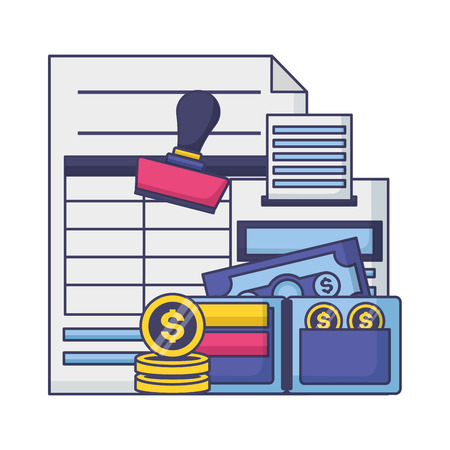Understanding Your Tax Status as a Creative
If you’re a creative professional—whether you’re a freelance graphic designer, an independent photographer, or running your own small art business—your tax status is quite different from someone who works a traditional 9-to-5 job. In the United States, creatives often fall under categories like freelancer, independent contractor, or sole proprietor. Each of these has unique tax implications that can affect everything from how you report income to the types of deductions you can claim.
Unlike employees who receive a W-2 and have taxes withheld from their paychecks, freelancers and independent contractors typically receive 1099 forms. This means you’re responsible for tracking your own income and setting aside money for taxes throughout the year. You also need to pay self-employment tax, which covers Social Security and Medicare contributions that would normally be split with an employer.
Understanding your classification is crucial because it determines what forms you’ll need to file and which expenses you can deduct. For example, if you operate as a sole proprietor or single-member LLC, you’ll generally report your business income on Schedule C of your personal tax return. If you’ve taken steps to incorporate or form an S-corp, your filing requirements and potential benefits change significantly.
In short, being a creative in America means wearing multiple hats: artist, entrepreneur, and sometimes even accountant. Knowing your tax status is the first step toward keeping more of your hard-earned money and staying out of trouble with the IRS.
Essential Tax Deductions for Creatives and Artists
As a creative professional or artist in the U.S., understanding which tax deductions you qualify for can save you a significant amount of money each year. The IRS recognizes that artists often have unique expenses, and there are several valuable write-offs you should know about. Here’s a breakdown of some of the most common deductions and how to keep your records organized so you can claim them with confidence.
Common Deductions for Creatives and Artists
| Deduction Category | Examples | Key Requirements |
|---|---|---|
| Home Office Expenses | Studio space, dedicated workspace at home | Space must be used regularly and exclusively for work |
| Art Supplies & Materials | Paints, brushes, canvases, film, clay, etc. | Directly related to your creative business |
| Software & Subscriptions | Adobe Creative Cloud, editing software, online portfolio fees | Used for producing or marketing your art |
| Travel Expenses | Mileage, airfare, lodging for shows or workshops | Must be business-related; keep receipts and logs |
| Marketing & Promotion | Website costs, business cards, advertising fees | Solely for promoting your creative work or business |
| Professional Development | Workshops, classes, conferences, memberships (like AIGA) | Directly related to maintaining or improving skills in your field |
Tips for Keeping Good Records
- Keep all receipts: Whether it’s a $5 paintbrush or $500 software license, save every receipt related to your art business.
- Create digital backups: Scan or photograph physical receipts and store them in cloud folders labeled by year and expense type.
- Use separate accounts: Consider using a dedicated bank account or credit card for all business-related purchases—this makes tracking expenses much easier come tax season.
- Mileage logs: If you drive to events, exhibits, or client meetings, use an app or notebook to track dates, destinations, and mileage.
- Categorize expenses: Regularly update a simple spreadsheet with categories from the table above so nothing slips through the cracks.
The Bottom Line on Deductions for Artists
You don’t need to be an accounting whiz to take advantage of these deductions—just stay organized throughout the year. With accurate records and awareness of what’s deductible, you’ll be ready to maximize your tax savings while focusing on what matters most: your creative work.

3. Navigating Self-Employment Taxes and Estimated Payments
If you’re a creative or artist working for yourself—whether full-time, as a side hustle, or freelancing—self-employment tax is a reality you can’t ignore. This tax covers both Social Security and Medicare contributions, which an employer would typically withhold for traditional employees. As your own boss, it’s up to you to calculate and pay these taxes, which are currently set at 15.3% of your net earnings.
Understanding Self-Employment Tax
Self-employment tax isn’t just “extra” tax—it’s how you contribute to benefits like Social Security and Medicare. Unlike traditional jobs where your employer pays half, you’re responsible for the full amount when self-employed. That means keeping good records of every dollar you earn (and spend on business expenses) is crucial.
Quarterly Estimated Tax Payments: Why They Matter
The IRS expects self-employed individuals to pay taxes as they earn income—not just at tax time in April. If you anticipate owing $1,000 or more in taxes for the year, you should make estimated payments each quarter (April, June, September, and January). Use Form 1040-ES to calculate what you owe based on your projected income and deductions. If your income fluctuates (as it often does for creatives), do your best to estimate conservatively, then adjust each quarter as needed.
Consequences of Underpaying
If you don’t pay enough throughout the year, the IRS may hit you with underpayment penalties—even if you settle up by April 15th. These penalties can add up quickly and eat into your hard-earned profits. To avoid surprises, set aside a percentage of every payment you receive into a separate savings account specifically for taxes. Many artists find that putting away 25-30% of their income helps them cover federal taxes, state taxes, and self-employment tax comfortably.
Staying proactive with quarterly estimated payments not only helps you avoid penalties but also makes tax season far less stressful. Remember: It’s all about planning ahead so you can focus on your art—not worrying about Uncle Sam!
4. Reporting Income from Multiple Sources
As a creative or artist in the U.S., your income might come from a patchwork of gigs, online platforms, commissions, and royalty payments. Accurate tracking and reporting are key for staying on top of your tax obligations—and avoiding surprises at tax time. Here’s what you need to know:
Tracking Your Income Streams
Whether you’re selling art on Etsy, performing at local venues, or licensing your designs, keep detailed records of all earnings. Use spreadsheets, budgeting apps, or bookkeeping software to log each payment received. This makes filing taxes easier and helps ensure you don’t miss any income that needs to be reported.
Common Forms You Might Receive
You may receive several different tax forms from clients, platforms, or galleries depending on how and where you earn money. Here’s a quick guide:
| Form | When You’ll Get It | What It Reports |
|---|---|---|
| 1099-NEC | If you earned $600+ from a single client (like a commission or gig) | Nonemployee compensation (freelance work, performances) |
| 1099-K | If you made over $600 in payments processed via third-party networks (like PayPal, Etsy, or other marketplaces) | Gross payment card/third-party network transactions (online sales) |
| 1099-MISC | If you received royalties over $10 or certain other miscellaneous income (e.g., awards) | Royalties, rents, prizes and awards, other income |
Tip:
If you don’t receive a form but earned income—report it anyway! The IRS expects all taxable earnings to be included on your return.
Organizing for Tax Time
- Create folders for each type of income and related documents (digital or physical).
- Download your annual sales summaries from online marketplaces.
- Keep invoices and receipts from every gig or sale—even if the payer doesn’t send a 1099.
- Set reminders for estimated tax payments if you expect to owe more than $1,000 for the year.
Pro Tip: Stay Ahead with Quarterly Reviews
Sit down every few months to update your records and review your expected tax liability. This habit not only reduces stress but can help you spot missing forms or errors early—giving you peace of mind come April.
5. Common Tax Pitfalls for Artists (and How to Avoid Them)
If you’re a creative professional or artist, tax season can feel overwhelming—especially with the unique challenges that come from managing your own business. Many artists stumble into common traps that could cost them money or even trigger an IRS audit. Here are some frequent mistakes and practical strategies to help you avoid them:
Mixing Personal and Business Expenses
One of the biggest slip-ups is combining personal and business finances. Using the same credit card or bank account for both makes it difficult to track deductible expenses and can raise red flags with the IRS. How to avoid it: Set up a dedicated business checking account and credit card. This keeps your records clean and makes tax time much less stressful.
Missing Deadlines
Artists often juggle multiple gigs, which means several sources of income—and sometimes, deadlines fall through the cracks. Missing quarterly estimated tax payments or filing late can lead to penalties and interest.
Stay on Schedule:
- Mark all IRS deadlines in your calendar.
- Set up automatic reminders on your phone or computer.
- If you have an accountant, ask them to send you a checklist each quarter.
Forgetting About 1099s and Other Forms
If you earn more than $600 from a client, they should send you a 1099-NEC form—but it’s your responsibility to report this income whether you get the form or not. Overlooking this step is a classic pitfall.
Tip:
- Keep track of every payment received, even small ones.
- Create a simple spreadsheet listing clients, dates, and amounts paid throughout the year.
Over- or Under-Claiming Deductions
It’s tempting to deduct everything under the sun, but only legitimate business expenses qualify. On the flip side, missing out on deductions leaves money on the table.
Avoid Errors By:
- Saving every receipt related to your art or creative business.
- Consulting IRS guidelines or a tax professional when unsure if an expense is deductible.
Poor Recordkeeping
Throwing receipts in a shoebox or relying on memory doesn’t cut it if you’re ever audited. Good records are your best defense—and your ticket to maximizing deductions.
Recordkeeping Tips:
- Use apps like QuickBooks Self-Employed or Wave to track income and expenses in real-time.
- Scan paper receipts and store them digitally for easy access.
By steering clear of these pitfalls with a few simple habits and tools, you’ll save time, reduce stress, and put more of your hard-earned money back in your pocket each tax season.
6. When (and Why) to Work with a Tax Pro
As a creative or artist, there’s a lot you can tackle on your own—creative expression, managing projects, even basic bookkeeping. But when it comes to taxes, there are moments when calling in an expert is not just helpful, but downright necessary. If your finances have gotten more complicated, say you’re juggling multiple income streams (freelance gigs, grants, royalties), or you’ve started selling your work online and across state lines, it might be time to consult a CPA or tax preparer who truly understands the creative industry.
Why bring in a pro? First off, tax professionals can help you identify deductions that are unique to creatives—things like studio space, art supplies, travel for inspiration or exhibitions, and even part of your home internet bill if you work remotely. They stay up-to-date with IRS rules so you don’t risk missing out on savings or accidentally triggering an audit. Plus, they know how to properly document and report special income sources like Patreon, Etsy sales, or teaching workshops.
Another big benefit: peace of mind. You’ll save yourself hours of stress and second-guessing by letting someone who “speaks IRS” handle the complex stuff. This means more energy for your art and less worry about deadlines or red flags. If you find yourself confused by quarterly estimated taxes, self-employment tax, or new reporting requirements (like 1099-K forms from payment platforms), that’s a clear sign to seek professional guidance.
When searching for a tax pro, look for someone with experience working with artists, musicians, writers, and other creatives. Ask for referrals from fellow artists or check with local arts organizations—they often have lists of trusted accountants familiar with your world. Remember: investing in expert advice can pay off by maximizing your deductions and keeping you fully compliant with IRS rules so you can focus on what matters most—your creativity.


